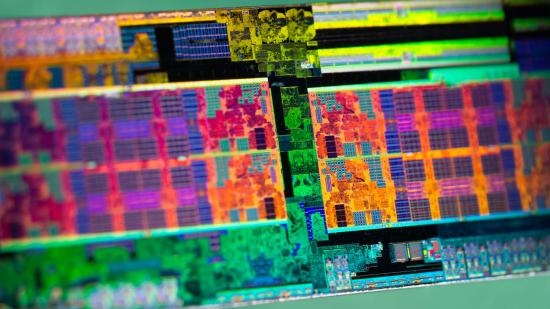AMD’s upcoming Zen 2 APUs may be paired with Vega graphics and not the latest Navi GPU silicon as first thought. AMD Renoir, which is the working codename for these upcoming APUs, has been spotted in Linux driver code, with all signs currently pointing to a GCN-based graphics solution.
Renoir APUs will likely launch in the first few months of 2020, following the regular cadence the company has stuck to since 2017. If the latest driver support for AMDGPU and the RadeonSI OpenGL drivers (spotted by Phoronix) are to be taken on face-value, it would seem AMD will be pairing its latest 7nm Zen 2 CPU architecture with AMD Vega graphics.
That may come as a surprise to many considering the RDNA architecture, introduced with AMD Navi in the RX 5700-series, is intended to be super scalable – with even mobile GPUs from Samsung in line for a little RDNA action. This new architecture is targeted directly towards gamers, however, with Vega expected to continue in the compute space.
Additions to both the RadeonSI OpenGL driver and Linux graphics driver code with AMDGPU are minimal, with few changes being made to support the new APUs expected some five or six months from now.
AMD has been playing its GPU naming fast and loose in the APU world, with the ‘Vega’ graphics chips it once lent to Intel with Kaby Lake G actually bearing more similarities to Polaris than its successor. It’s highly unlikely that’s the case here, but it’s not without some precedent.
What could lend itself to the Vega GPU camp is the chiplet design currently employed with AMD Ryzen 3000 and EPYC processors. The Zen 2 design currently utilises both 7nm and 12nm processes, with the CCD utilising the former and the cIOD utilising the latter. In this eventuality, it wouldn’t be too taxing to bring Vega back into the heterogeneous mix with Renoir.
A monolithic chip would require both CPU and GPU architectures on the same process. And without rehashing Raven Ridge again – an unlikely move in the face of Intel’s Ice Lake processors – the only remaining possibility would be a Zen 2 and Navi combo on the 7nm process, which is contrary to the Vega-leaning code we’re privy to today.
A chiplet design with Renoir may also allow AMD to increase its mobile CPU core counts up from the current four-core cap. A standard Zen 2 desktop CCD is equipped with two CCXs for a potential total of eight cores.
Keeping the quantity of 7nm silicon down to a minimum could also be a smart play to keep yields high and costs low, which will be even more pivotal to AMD’s mobile efforts as its chips go head-to-head with Intel’s 10nm Ice Lake processors next year. Intel has drastically increased graphics performance with its latest Y- and U-series chips, and that puts extra pressure on AMD’s APUs to shine in their respective price brackets.
Renoir will follow the current Picasso generation chips, led by the Ryzen 5 3400G and Ryzen 7 3750H. These are a refresh of the Raven Ridge architecture, shifted onto the 12nm process node from GlobalFoundries.
Header image courtesy of Fritzchens Fritz CC-0
